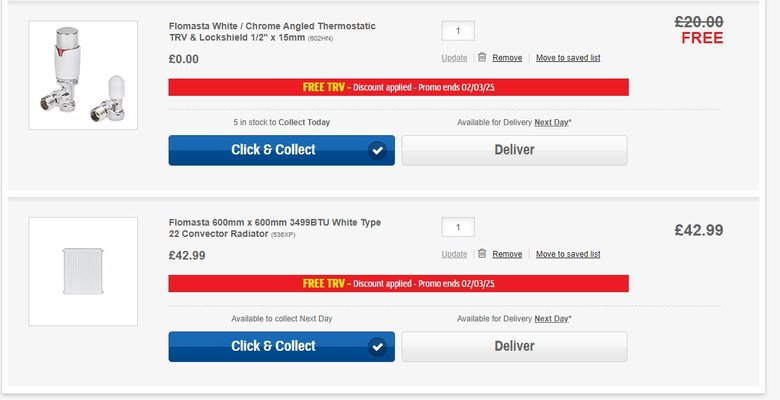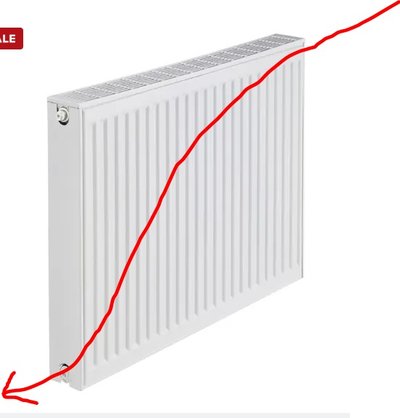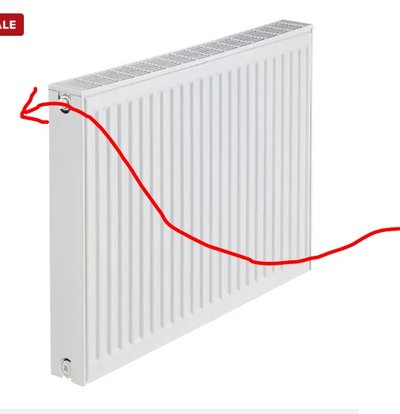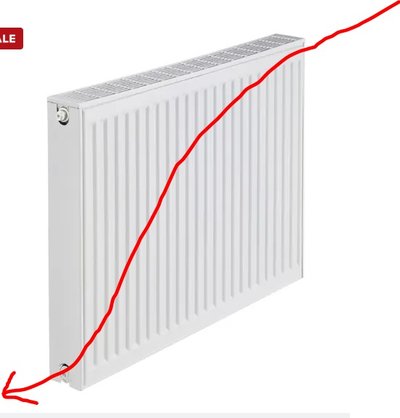You are using an out of date browser. It may not display this or other websites correctly.
You should upgrade or use an alternative browser.
You should upgrade or use an alternative browser.
Drilling chinese diesel heater tank (Finest plastic tank)
- Thread starter JOEPRO
- Start date
JOEPRO
Member
- Messages
- 5,183
- Location
- UK
I've never used one, no space inside but tempted to stick one outside with some kind of waterproof enclosure.
I've seen some installs like this that are not ideal.
Aka they have the hot air outlet into the heated space which is fine. But the main heater blower intake is also still outside in some cases hence they are in effect always heating cool outdoor air and pumping it into the space. Which is inefficient and these are intended to have both heater air ports inside the heated space.
Or you could ensure to route an additional heater air intake duct from the heated space. But then that simple outdoor waterproof enclosure is beginning to look quite complicated....
Jelly_Sheffield
Time is an illusion. Lunchtime doubly so.
- Messages
- 1,438
- Location
- Sheffield, UK
I think it depends what you want to achieve...I've seen some installs like this that are not ideal.
Aka they have the hot air outlet into the heated space which is fine. But the main heater blower intake is also still outside in some cases hence they are in effect always heating cool outdoor air and pumping it into the space. Which is inefficient and these are intended to have both heater air ports inside the heated space.
If the temperature differential to the outside is the most important parameter you want to optimise for then it's not the system design for you.
But whilst it reduces ΔTₘₐₓ of the heated space to outside, the energy not delivered as increased enthalpy of the workshop air doesn't just disappear, as there is also a humidity differential most of the "lost" energy is consumed as work in the form of mass transport:
Taking cold (and thus low absolute humidity) air from outside, heating it (thus reducing relative humidity) then pushing it inside (where it can strip out moisture in the environment) and creating a positive pressure (which forces the cooler wetter air out of the building).
This is why almost all vehicle cabin heaters use outside air, because it improves control of condensation, and some camper installs of these diesel night heaters use that approach too for the same reason.
You may not consider that dehumidification effect to be useful work, but someone who is as (or more) concerned about rusting as they are about having a comfortable working temperature would.
Thus it could be considered inefficient for you, but efficient for someone else.
JOEPRO
Member
- Messages
- 5,183
- Location
- UK
I think it depends what you want to achieve...
If the temperature differential to the outside is the most important parameter you want to optimise for then it's not the system design for you.
But whilst it reduces ΔTₘₐₓ of the heated space to outside, the energy not delivered as increased enthalpy of the workshop air doesn't just disappear, as there is also a humidity differential most of the "lost" energy is consumed as work in the form of mass transport:
Taking cold (and thus low absolute humidity) air from outside, heating it (thus reducing relative humidity) then pushing it inside (where it can strip out moisture in the environment) and creating a positive pressure (which forces the cooler wetter air out of the building).
This is why almost all vehicle cabin heaters use outside air, because it improves control of condensation, and some camper installs of these diesel night heaters use that approach too for the same reason.
You may not consider that dehumidification effect to be useful work, but someone who is as (or more) concerned about rusting as they are about having a comfortable working temperature would.
Thus it could be considered inefficient for you, but efficient for someone else.
Yes some fair points there. I understand it would essentially act as a heated PIV system. Which in some instances would be desirable and others would not as you could be pulling in humid air to a draught proof workshop.
(There is no way to recover all of the humidity and drain it so any exterior humidity will be sent inwards to the heated space regardless)
JOEPRO
Member
- Messages
- 5,183
- Location
- UK
I guess what I'm saying is that humidity problems in workshops, particularly at this time of year come from the outside in.
Therefore bringing in large volumes of external air through a heater doesn't "dry" the air it will just send it, and the moisture indoors.
But on some days you could have less humidity outside than inside after a bad spell but those circumstances would be few and far between IMO.
Therefore bringing in large volumes of external air through a heater doesn't "dry" the air it will just send it, and the moisture indoors.
But on some days you could have less humidity outside than inside after a bad spell but those circumstances would be few and far between IMO.
Jelly_Sheffield
Time is an illusion. Lunchtime doubly so.
- Messages
- 1,438
- Location
- Sheffield, UK
I may have ordered a small double radiator to route the exhaust through for max efficiency. Drying car towels etc.
View attachment 479734
Free TRV to use elsewhere!!
That's a nifty idea, but get a Carbon Monoxide monitor and take lots of care with sealing and corrosion control.
The bspp fittings on a radiator like that won't be 100% gas tight without suitable seals/sealing compound, and there's not many thread sealing compounds suitable for the high inlet temperature.
It's also not intended to have high temperature combustion gasses with Oxygen, Water Vapour, SOx and NOx inside it, increasing the rate of corrosion.
I'm thinking best to route gases in from bottom out top?
Your intuition that counter current flow (hot gas in bottom, and cooker exhaust out the top) would be the most efficient is correct for a well designed heat exchanger, however...
I'm not sure that will be a very efficient air-air heat exchanger though.
You would normally want each path to have the smallest feasible hydraulic diameter (4 times the area divided by the perimeter) for a given flow rate to force conductive effects (heat going from the gas to the shell) to predominate over convective effects (hot gas warming cold gas inside the shell).
The smallest feasible hydraulic diameter for a gas is much smaller than for a fluid, so I would expect a lot more heat to flow through the radiator than is transfered to the environment.
But, because of how convection works you could somewhat mitigate that source of inefficiency by using a co-current setup (hot stream enters at the top and the exhaust leaves through the bottom).
Like your first diagram.
This would end up heating a smaller volume of room air to a higher temperature (but in a well designed heat exchanger does so at the expense of transferring less enthalpy overall).
More importantly from a practical point of view, a Co-Current configuration would allowing condensation to naturally drain to the outside via the exhaust, reducing both corrosion risk and maintenance requirements.
JOEPRO
Member
- Messages
- 5,183
- Location
- UK
That's a nifty idea, but get a Carbon Monoxide monitor and take lots of care with sealing and corrosion control.
The bspp fittings on a radiator like that won't be 100% gas tight without suitable seals/sealing compound, and there's not many thread sealing compounds suitable for the high inlet temperature.
It's also not intended to have high temperature combustion gasses with Oxygen, Water Vapour, SOx and NOx inside it, increasing the rate of corrosion.
Your intuition that counter current flow (hot gas in bottom, and cooker exhaust out the top) would be the most efficient is correct for a well designed heat exchanger, however...
I'm not sure that will be a very efficient air-air heat exchanger though.
You would normally want each path to have the smallest feasible hydraulic diameter (4 times the area divided by the perimeter) for a given flow rate to force conductive effects (heat going from the gas to the shell) to predominate over convective effects (hot gas warming cold gas inside the shell).
The smallest feasible hydraulic diameter for a gas is much smaller than for a fluid, so I would expect a lot more heat to flow through the radiator than is transfered to the environment.
But, because of how convection works you could somewhat mitigate that source of inefficiency by using a co-current setup (hot stream enters at the top and the exhaust leaves through the bottom).
Like your first diagram.
This would end up heating a smaller volume of room air to a higher temperature (but in a well designed heat exchanger does so at the expense of transferring less enthalpy overall).
More importantly from a practical point of view, a Co-Current configuration would allowing condensation to naturally drain to the outside via the exhaust, reducing both corrosion risk and maintenance requirements.
Good suggestion thanks for that, yes I think I'll go from top to bottom then. And I may end up changing the fuel tank now to a stainless steel one too since I'll have to reconfigure my heater install.
Jelly_Sheffield
Time is an illusion. Lunchtime doubly so.
- Messages
- 1,438
- Location
- Sheffield, UK
I would tend to think that condensation prevention is the problem in terms of rust control.I guess what I'm saying is that humidity problems in workshops, particularly at this time of year come from the outside in.
Therefore bringing in large volumes of external air through a heater doesn't "dry" the air it will just send it, and the moisture indoors.
But on some days you could have less humidity outside than inside after a bad spell but those circumstances would be few and far between IMO.
Generally speaking the Absolute Humidity of air outside in the winter will be a lot lower than the Absolute Humidity of an enclosed and occupied space.
The Relative Humidity of outside air will be higher due to the lower temperature, but that RH is reduced substantially by heating.
If we assume that:
- the internal RH will equalise to about 55% in a heated (20°C) occupied space,
- outside air is 5°C and 90% RH, and
- the heater heats the outside air up by 15°C
Then:
- the air in the workshop during use will have an absolute humidity of 9.51 g/m³
- whilst outside air has an absolute humidity of 6.117 g/m³
- so heating the external air up to 20°C, creates an inflow of air at 35% RH, reducing both absolute and relative humidity.
More importantly if you heat recirculated workshop air and allow it to stabilise at 55% RH, when the heater is switched off and it cools from 20°C to 5°C, the air will actually reach the dew-point (100% RH) and start to form condensation once the temperature drops below ~9.5°C.
Edit: Just looked it up out of curiosity, humans release about 16.5g of water per hour in our breath... Which is a lot more than I would have anticipated, and explains why occupied spaces accumulate so much moisture.
Last edited:





